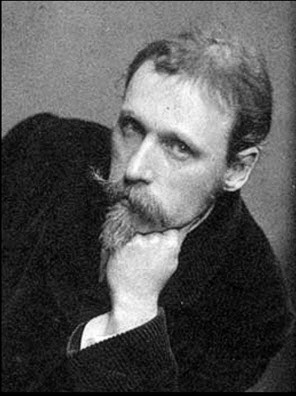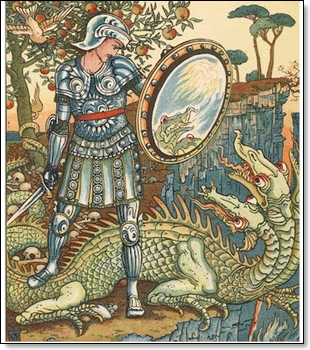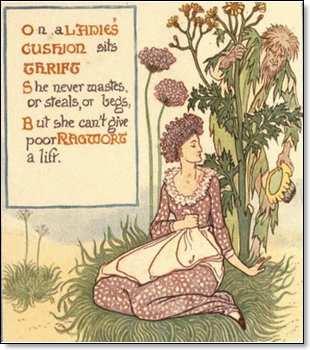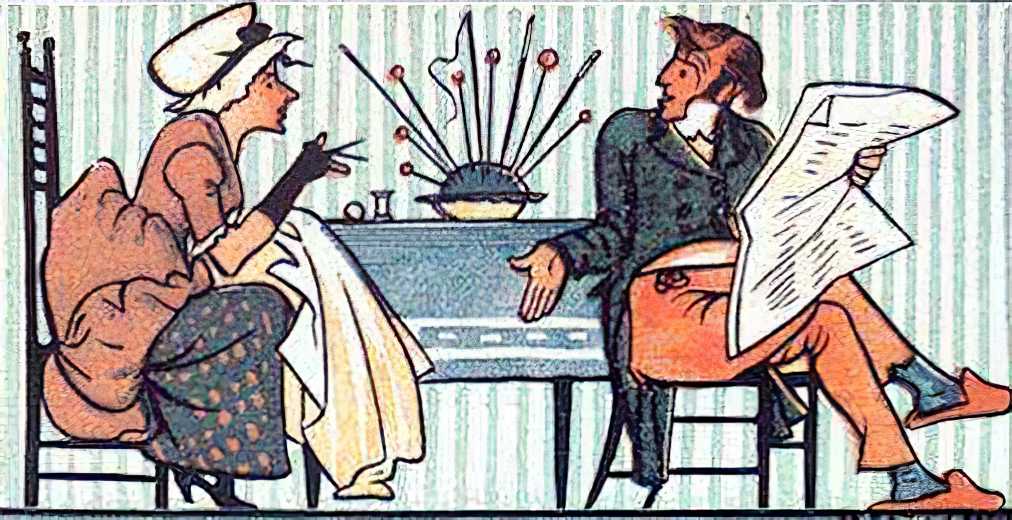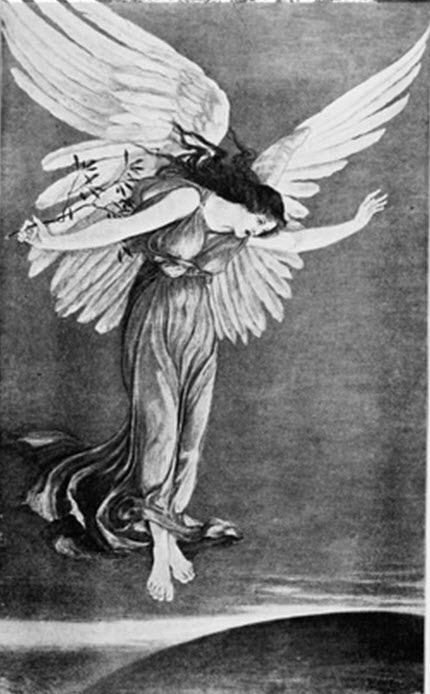Walter Crane >
Articles >
The Influence of Japanese Art on Walter Crane's Style and Technique
Walter Crane was a British artist and designer who worked during the late 19th and early 20th centuries. His intricate illustrations and designs were heavily influenced by Japanese art. This essay will examine how Crane's style and technique were shaped by Japanese art.
In the late 19th century, Japan experienced rapid modernization and Westernization, resulting in the country's exposure to Western technology, culture, and aesthetics. Japanese art began to attract attention in Europe, particularly in France and England. Walter Crane was one of the artists who was deeply influenced by Japanese art and incorporated elements of it into his work.

An Illustration from the Princess Belle Etoile by Walter Crane
One of the most apparent ways in which Japanese art influenced Crane was through his use of color. Japanese art often features subtle color variations, creating a sense of depth and richness in the image. Crane adopted this technique in his work, using subtle color variations to create texture and interest. He also incorporated the Japanese technique of using gold leaf and metallic elements into his designs, giving his work a luxurious and ornate feel. In keeping with the Japanese aesthetic, Crane frequently used harmonious and balanced color schemes in his work, using complementary colors to create dynamic and balanced compositions. He also used negative space to create a sense of balance and simplicity.
Specifically Crane's use of color was marked by:
- Subtle Color Variations: Japanese art often features subtle variations in color, creating a sense of depth and richness in the image. Crane adopted this technique in his own work, using subtle color variations to create texture and interest. For example, in his illustration for "The Frog Prince," he used shades of green and blue to create the image of water and lily pads, giving the image a sense of depth and realism.
- Use of Gold: Japanese art often features gold leaf and other metallic elements, which Crane also incorporated into his designs. He used gold ink and metallic paint to create shimmering effects in his illustrations and designs. For example, in his "Peacock and Dragon" wallpaper design, he used gold ink to create the outlines of the peacock and dragon, giving the design a luxurious and ornate feel.
- Harmonious Color Schemes: Japanese art is known for its harmonious and balanced color schemes, which Crane also adopted in his work. He often used complementary colors (colors that are opposite each other on the color wheel) to create dynamic and balanced compositions. For example, in his illustration for "The Sleeping Beauty," he used shades of pink and green to create a harmonious color scheme that is reminiscent of traditional Japanese textiles.
- Use of Negative Space: As mentioned before, Japanese art often uses negative space to create a sense of balance and harmony. Crane used negative space in his color palettes as well, leaving areas of the design blank or using a limited color palette to create a sense of balance and simplicity. For example, in his "Bamboo" wallpaper design, he used a limited color palette of green and white, leaving large areas of the design blank to create a sense of spaciousness and tranquility.
Japanese art also influenced Crane's use of line and form. He incorporated flowing lines and stylized forms into his work, often experimenting with new techniques such as using a single line to create multiple forms. Crane used bold, black outlines in his illustrations, creating a strong graphic quality that is similar to Japanese prints. He was also inspired by the Japanese technique of using negative space in his designs, giving his work a sense of balance and harmony.
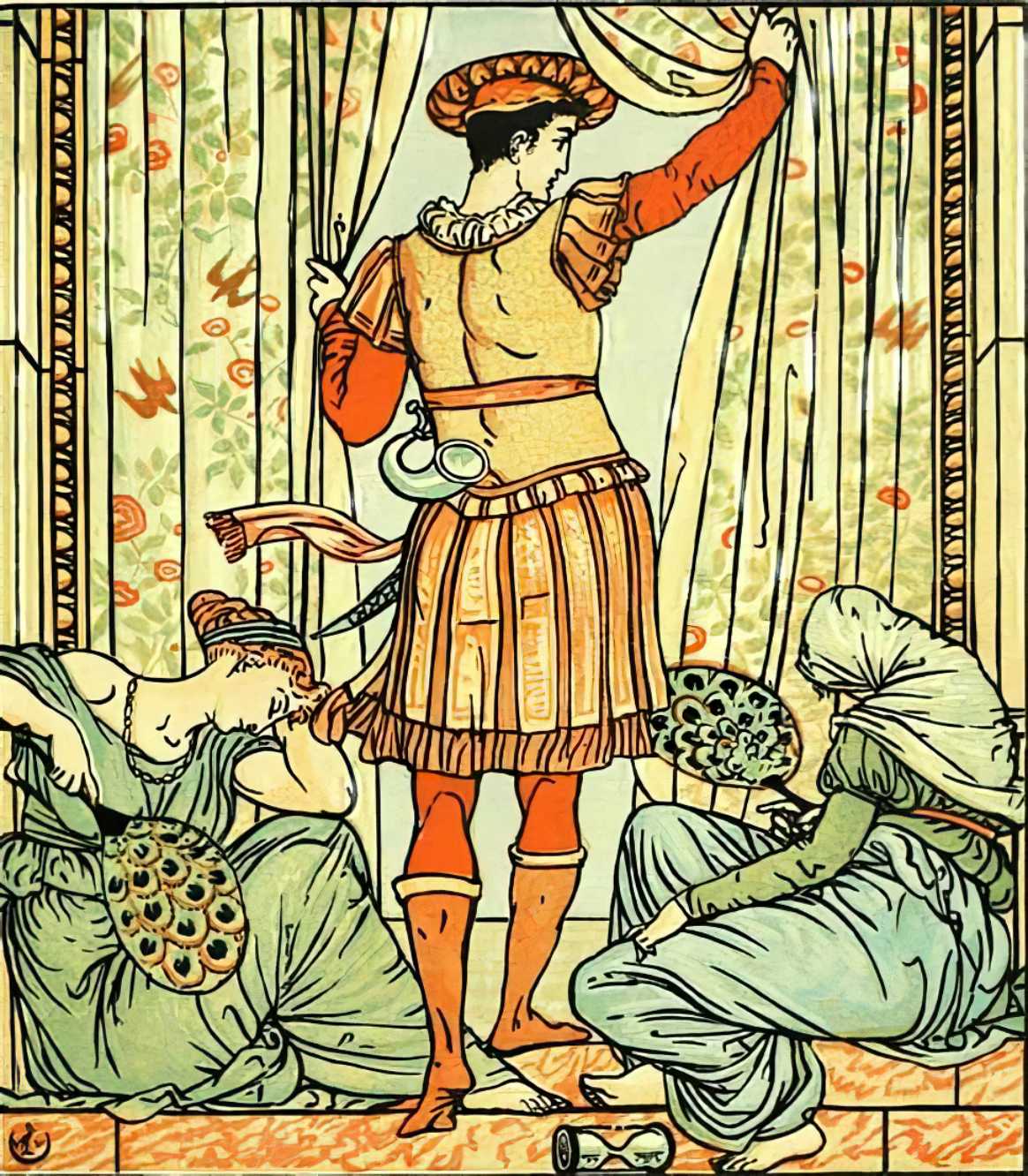
Illustration from Sleeping Beauty by Walter Crane
Examples of Crane's use of Japanese techniques of line and form include:
- Flowing lines and curves: Japanese art is known for its flowing lines and curves, which Crane incorporated into his illustrations. For example, in his illustration for the fairy tale "Beauty and the Beast," Crane used flowing lines to create the image of a beautiful maiden surrounded by swirling vines and flowers. The fluidity of the lines gives the image a sense of movement and grace, much like the brushwork in Japanese calligraphy.
- Stylized forms: Japanese art often features stylized, simplified forms that suggest rather than depict the subject matter. Crane adopted this approach in his own work, particularly in his designs for wallpaper and textiles. For example, in his "Swans" wallpaper design, he used simplified, stylized forms of swans and water lilies that are reminiscent of Japanese woodblock prints.
- Bold outlines: Japanese woodblock prints are known for their bold, black outlines, which Crane also used in his illustrations. In his illustration for "The Pied Piper of Hamelin," he used thick, black lines to create the outlines of the characters and the buildings, giving the image a strong graphic quality that is similar to Japanese prints.
- Use of negative space: Japanese art often uses negative space (the space around and between objects) to create a sense of balance and harmony. Crane incorporated this technique into his designs, particularly in his illustrations for children's books. For example, in his illustration for "The Frog Prince," he used negative space to create the image of a frog sitting on a lily pad, surrounded by water and lily pads. The use of negative space gives the image a sense of depth and balance.
In addition to formal elements, Japanese art also influenced Crane's subject matter. He was interested in Japanese folklore and mythology, incorporating these themes into his illustrations. He also drew inspiration from Japanese nature, using images of flowers and birds in his work.
In particular we can find elements of Japanese folklore and motifs in the following:
- Japanese Folklore and Mythology: Crane was fascinated by Japanese folklore and mythology, which he often incorporated into his illustrations. For example, in his illustration for the fairy tale "The Sleeping Beauty," Crane depicted the characters wearing Japanese-style clothing and surrounded by cherry blossoms and other Japanese motifs. He also illustrated several stories from Japanese folklore, such as "The Dragon of the North" and "The Bamboo-Cutter and the Moon-Child."
- Japanese Nature: Japanese art often features images of flowers, birds, and other elements of nature. Crane incorporated these motifs into his designs, creating intricate and beautiful images that were inspired by Japanese art. For example, in his "Chrysanthemum" wallpaper design, he used stylized images of chrysanthemums to create a repeating pattern that is reminiscent of Japanese textiles.
- Japanese Architecture: Japanese architecture was also an influence on Crane's work. He often used images of Japanese buildings and landscapes in his illustrations and designs. For example, in his illustration for "The Three Bears," Crane depicted the bears' house as a traditional Japanese-style building, complete with a thatched roof and paper screens.
- Japanese Aesthetics: Crane was also influenced by Japanese aesthetics, such as wabi-sabi (the appreciation of imperfection and impermanence) and yugen (a sense of mystery and depth). These concepts are evident in many of his designs, which often feature asymmetrical compositions, subtle color variations, and other elements that are characteristic of Japanese art.
Walter Crane's style and technique were significantly influenced by Japanese art. He incorporated the subtle use of color, gold, harmonious color schemes, negative space, flowing lines, stylized forms, bold outlines, and Japanese folklore and nature into his work. The impact of Japanese art on Crane's work is a testament to the power of cross-cultural exchange and the inspiration that can be drawn from different artistic traditions. However, it would be a mistake to over-emphasize the role of Japanese art in Crane' style. He was an original artist, and although inspired and influenced by Japanese techniwues, he created his own style. Furthermore, Japanese art was not the only influence on Crane. Crane was an avowed socialist and his art was also influenced by his political and moral beliefs.
Moreoover, Crane was not alone in his interest in Japanese art. Many other artists and designers of the time were also exploring Japanese art and incorporating it into their own work. This movement became known as Japonisme, and it had a profound impact on the development of modern art.

